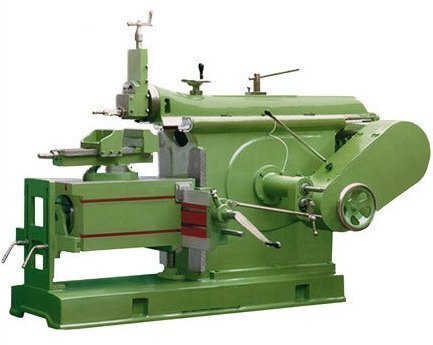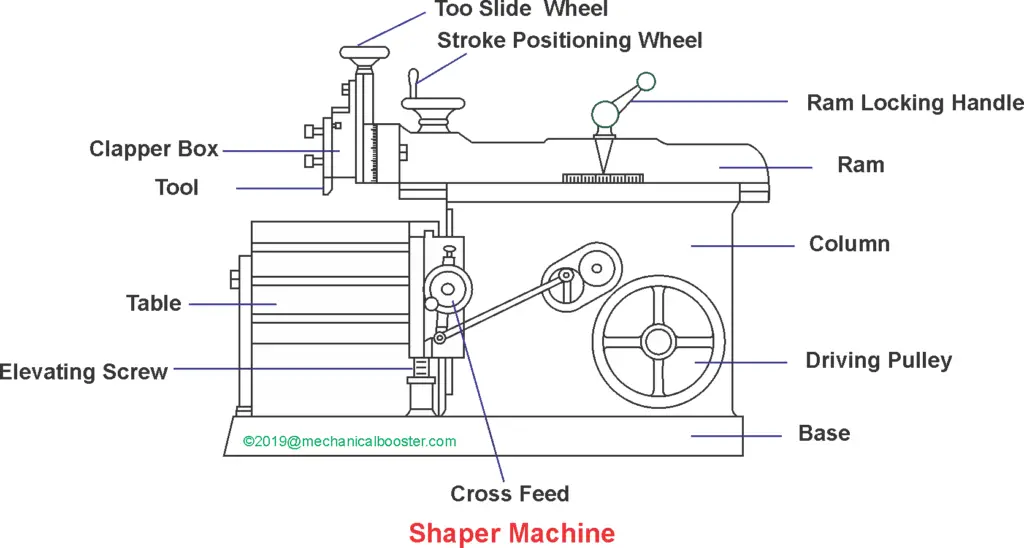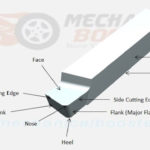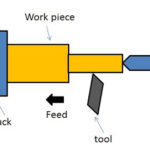A shaper machine is one of the most common machine tools that is seen in the mechanical workshops and in the manufacturing industries. It always plays a very crucial role in manufacturing parts, different jobs, etc.
In this article, we are going to discuss all the details about the shaper machine. So, without taking too much time let us get started.
What is the Shaper machine?
A shaper machine is one of the types of machine tool which uses the relative motion between the workpiece and the cutting tool. With the help of this linear motion, this device machine (cut) in a linear toolpath. Its cut is quite similar to the lathe machine. Lathe gives us a helical cut while the shaper gives us the required linear cut.

What is Machine Tool?
Some of you may don’t know about the machine tool?
A machine tool is a machine for shaping the metal part or any other kind of rigid material. This shaper machine is similar to that of the wood shaper.
A wood shaper is a device through which we can obtain the required shape as well as the size of the wood. In other words, a wood shaper is nothing but a woodworking tool. It is designated as a shaper in Northern America and a spindle molder in the United Kingdom.
While studying manufacturing processes, you might have heard about the metalworking planer? A shaper machine that we are going to study is somehow quite similar to that of the metalworking planer. The key point of the difference between the shaper and the metalworking planer are their sizes.
A metalworking planer is larger than that of the shaper machine. In the shaper machine, cutting tool moves while in that of the metalworking planer workpiece moves.
The History Behind
Samuel Bentham was a talented English engineer and a world-famous naval architect. He has invented many things in the field of mechanical engineering. He made the shaper machine during 1791 and 1793. It got huge importance after its invention. They were very common during the mid-19th century and the start of the 20th century.
In today’s world, we sometimes use the CNC type machine, milling machine, grinding machine. Even sometimes we use the broaching machine for the shaper machine.
Now you may be thinking of the shaper can be replaced by all these other modern machines, then, why will industries still use shaper machines for manufacturing purposes?
Well, the basic function of the shaper is still awesome. That means its machines (cut) the part very delicately. Also, it is constructed in such a way that, most of the time we have to only repair it a few times. If It is maintained properly, we can easily use it for years without any issues.
That is why the shaper machine still has its own importance in today’s era. Today a shaper is used for jobbing shops, repair shops and almost any other type of job. Whether you want to produce one piece of the part or many pieces, you can easily do it with it.
After talking about the definition as well as the history behind the shaper, it is now time to talk about the working principle of the shaper machine.
Working Principle
Before discussing the working principle of the shaper machine, we will talk about the cutting tool. A cutting tool is a device which does the function of removing the material from the workpiece.
In the shaper machine, we use a single-point cutting tool. A single point cutting tool has only one cutting edge. A turning tool is a perfect example of a single-point cutting tool. In a tool holder, this single point cutting tool is placed and it is also mounted on the ram.
The workpiece on which the machining is to be performed is held in a vice rigidly or it is clamped directly on the table. This table may be supported at the other end. The ram exhibits the reciprocating motion. The cutting tool holder which is in the tool holder moves backward as well as forward over the surface of the workpiece.
You may be wondering as the ram rotates, in which stroke does the cutting occur? Usually, it depends on the shaper. In the standard shaper machine, the cutting takes place during the forward stroke. In this case, the backward stoke is considered idle.
This motion of the cutting tool is achieved by the “Quick Return Mechanism”. The cutting depth is achieved via the movement of the tool. The tool moves in a downward direction towards the workpiece. The feed motion follows the “Pawl and Ratchet Mechanism”.
Also Read:
- Types of Drilling Operations Performed in Drilling Machine
- Difference Between Horizontal and Vertical Milling Machine
- Types of Lathe Machine – Mother of all Machines
Main Parts

The shaper machine consists of the following five main parts:
- Base
- Column
- Table
- Ram
- Cross-rail
Base:
- The base is the most important part of the shaper. The base provides support for all other machining tools.
- The base is also hollow and made up of cast iron. Its hollow shape also helps in minimizing the vibration.
- It is made in such a way that it can take the entire load of the machine.
Column:
- A column is mounted on the base and it is made from the cast iron.
- Two guideways are provided on the column on which the ram reciprocates
- The column supports the reciprocating ram and worktable.
Cross-rail
- The cross rail is mounted on the surface of the table on which saddle is present
- With the help of the elevating screw and the cross-rail, the vertical motion of the table is achieved.
- The horizontal motion is given to the table by moving the saddle with the help of the cross-feed screw.
Ram:
- The guideways are present on the column Ram reciprocates along the guideways of the column and carries the head of the tool with the single point cutting tool.
- Cutting action in the forward stroke of the ram is caused by the tool head present in the clapper box.
- The depth of the cut is given by the down feed screw.
Table:
- Swiveling of the table at any required angle can take place.
- The table is clamped to make it rigid for heavy applications.
- The table is the core of the shaper machine.
- T type bolts are used for the clamping on both sides. Top as well as the bottom.
The Mechanism used in the Shaper Machine:
While studying any mechanical system, it is very essential to understand the mechanism behind it. As above stated, in the shaper machine the mechanism that dominated the entire process is “Quick return mechanism”.
The reciprocating motion of the ram and the above mentioned quick-return mechanism is obtained with the help of the combination of the below four mechanisms:
- The automatic table feed mechanism
- Whitworth quick return mechanism
- Hydraulic shaper mechanism
- Crank and slotted mechanism
- Crank and slotted link mechanism:
In the crank and slotted link mechanism, the power is transmitted to the bull gear through pinion. This pinion receives its power from the individual motor.
The speed of the bull gear is changed by the different combinations of the gearing system.
- Whitworth quick return mechanism:
The Whitworth quick return mechanism is used in the slotting machines as well as in the shaper. The one thing that is very important in the case of the Whitworth quick return mechanism is the time.
The time required for the forward stroke is more than the return stroke. The forward stroke is also termed as the cutting stroke.
Also, the mean speed of the ram during the cutting stroke is very less than the mean speed of the ram during the return stroke.
- Hydraulic Shaper Mechanism:
In the hydraulic shaper mechanism, the cutting tool is moved forward or backward with the help of the piston kept inside the cylinder.
Here, the valves, pressure, and oil play an important role. The cutting speed is adjusted with the help of the throttle valve. The throttle valve controls the flow of the oil. Uniform pressure is maintained during the cutting stroke to get the required machining effect.
- Automatic table feed mechanism:
This is the simplest type of mechanism in the shaper machine. The automatic table feed mechanism is very simple. This mechanism is successfully activated by rotating a ratchet wheel which is mounted at the cross-feed screw.
This mechanism enables the same motion of the cross-feed screw after each stroke.
Thus, we have discussed all the four mechanisms involved in the shaper. All these four mechanisms have their significance in the working of the shaper machine. The study or the analysis of the shaper machine will be incomplete if these mechanisms are not studied properly.
Also Read:
- What is Slotter Machine?
- What is Drilling Machine and How It Works?
- Difference Between Capstan and Turret Lathe
Working of Shaper Machine
The workpiece is usually mounted on the table. The table is rigid as well as box-shaped and it placed in front of the machine or just near to the machine.
We can easily adjust the height of the table. The table is adjusted in such a way that it suits the workpiece. We can control the motion of the table manually. Can you think of any other alternative way for the motion of the table?
The table generally advances with the help of the automatic feed mechanism. This mechanism acts on the feed screw. Which in turn carries out the cutting effect. The ram can be easily adjustable for stroke.
For better understanding about the working of a shaper machine. Watch the Video:
Types of Shaper Machine:
Shaper machines are classified as below:
- Based on the cutting stroke
- Based on table design
- Based on ram travel
- Based on the type of the driving mechanism
Based on the Mechanism:
-
Hydraulic Shaper:
As per the name, in the hydraulic shaper, the required machining is done with the help of the hydraulic mechanism. This machine uses oil under high pressure. The high-pressure oil acts on both sides of the piston causing its reciprocating machine. This reciprocating motion again results in the movement of the ram. The benefit of this machine is that we can maintain a constant cutting speed.
-
Crank Type Shaper:
Crank type shaper machine is one of the most common types of shaper machines. The tool executes reciprocating machining.
-
Gear Type Shaper
In the gear type shaper machine, ram is reciprocating in motion. The transverse speed of the machine depends on the number of gears.
Based on the Design of the Table:
-
Universal Shaper Machine:
In these types of shaper, the table can be moved in the inclined direction along with the horizontal and vertical. Also, the shaper machine can swivel along with its own axis. As this shaper is applicable for the universal applications, it is termed as the “universal shaper machine”.
-
Standard Shaper Machine:
In the standard shaper machine, the table has only two components, horizontal and vertical. These directions can be used for giving the feed.
Based on the Cutting Stroke
-
Draw Cut Type:
In the draw cut type shaper machine, the metal is removed in the backward position of the ram.
-
Push Cut Type:
In the push cut shaper machine, the metal is removed during the forward position of the ram. This is the most commonly used shaper.
Also Read:
- What is Electrical Discharge Machining (EDM) Process and How it Works?
- Ultrasonic Machining (USM) – Main Parts, Working Principle, Advantages and Disadvantages with Application
- Difference Between Jigs and Fixtures
Based on the Ram Travel:
-
Vertical Shaper:
In this type of shaper machine, the ram reciprocates in the vertical direction. If you want to machine (Cut) the internal surfaces then, a vertical shaper is the perfect machine for you. The workpiece can be moved in any given direction.
-
Horizontal Shaper:
A horizontal shaper machine consists of a reciprocating ram. The ram moves in the horizontal direction. It is mainly used for the generation of the flat surfaces and for other applications.
Advantages
- The main benefit of the shaper machine is a low tooling cost. In the shaper machine, we use a single-point cutting tool which is inexpensive and easily available. As we can use the single point cutting tool, the machining can be done efficiently without too much cost.
- Also, the cutting stroke has a definite stopping point which helps in the machining.
- Another benefit of the shaper machine is that it is easy to handle. Anyone with the required knowledge can use it without any issue. Though some skills are required to operate it, people with some experience with the machine can handle it without any hassle.
- A shaper machine can be used for flat or angular surfaces.
- The machining can be done without any kind of errors with the shaper machine.
Disadvantages
- With the help of the shaper, machining is carried out at a slower rate. As the cutting and return stroke involved in it, it takes a longer time for machining than the milling and other types of machines.
- Also, it has only one tool for cutting the workpiece. You are unable to cut the workpiece in both directions.
- The cutting speed is not achieved high with the shaper machine.
Applications
The shaper machine is used for machining straight as well as flat surfaces. Below are some of its most important applications:
- Gear teeth as well as for internal splines.
- In the blind holes, gear tooth cutting is achieved with this machine.
- It is also used for dovetail sliders.
- It is also a prominent device with the help of which we can increase the smoothness of a rough surface.
- It is often used for the electric discharge machining.
- Irregularly shaped holes having the tight corners cannot be made using the milling or any other machining process. Only a shaper machine can create such holes.
Thus, a shaper machine has its importance in the field of mechanical, production and industrial engineering. Though more advanced options other than the shaper machine are available, it is still beneficial to use it.
That is all about this article. Developments are going in the field of the shaper machine and in the future, we can see a more versatile shaper machine than that of the standard one.
Thanks for reading this article. If you have any questions about it then, comment below.









